Have you ever thought about transitioning you and your family from the typical American, refined foods diet to a traditional whole foods diet?
The benefits of a whole foods diet are undisputed by the informed scientific community! And while faddish foods within the “health industry” will come and go, traditional whole foods have stood the test of time.
So, I’m going to equip you with a workable schedule which will allow you to gradually introduce you and your family to the health and culinary benefits a traditional diet offers, as well as, make the transition as smooth as possible.
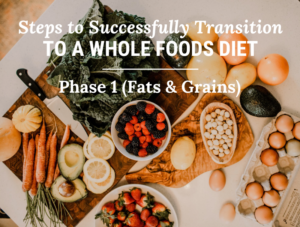
You can choose if you want to make this a six-week plan or a six-month plan, but the goal is to think of this “transition” as a process…not an event! In order to make a true life-long impact on your health, you want to shift into making this a new lifestyle!
Here are a few things that you can expect to learn through this process:
- You’ll begin to think of life-giving foods as those that are unadulterated by commercial processing techniques and are in the forms as close to that which nature provides.
- You’ll learn the importance of carefully reading labels, as well as, being wary of foods labeled “low-fat” or “enriched”.
- An increased self-awareness of how food affects your body and how you feel.
And just remember…be patient with yourself and with your less-enthused family members! Trust me, if you stay the course, in the end, the advantages will be yours and for those in your care.
You do NOT have to be a part of the current trend of rising degenerative diseases in the Western world. True health can be yours, especially as you seek out true nourishment from real food.
So, let’s get this party started…
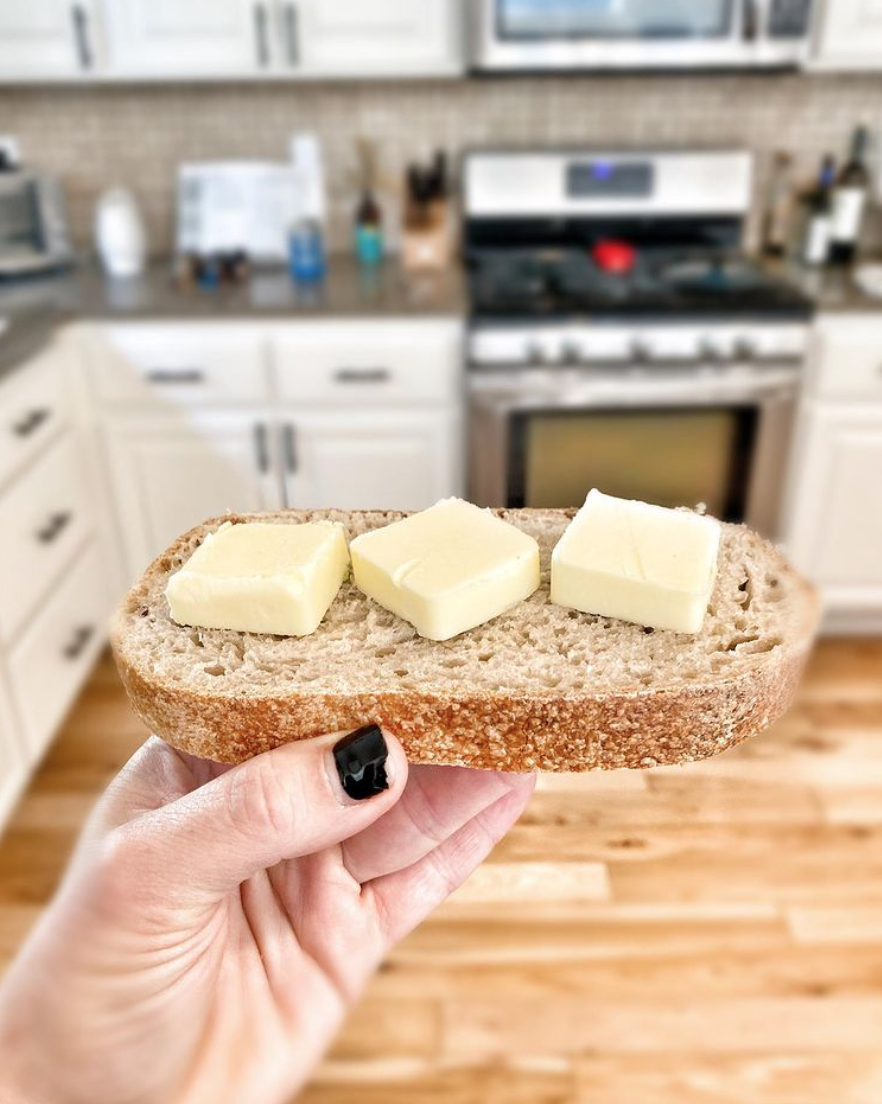
Week/Month 1: Fats
1. Eliminate unhealthy fats!
- This includes hydrogenated and partially hydrogenated oils.
- Read labels – These fats are in most processed foods, especially breads, crackers, boxed cereals, refined vegetable oils and salad dressings.
- Avoid commercial baby formulas. If you’re a mother of an infant who is unable to breastfeed, you should avoid all commercial baby formulas.
- Cholesterol and saturated fats are essential for growth in babies and children, in particular for the proper development of the brain that’s composed of 75% fat. So, breast milk contains over 50% of its calories from fat, much of which is saturated, and it also provides a higher proportion of cholesterol than most other foods. Whereas, commercial milk-based formulas are low in saturated fat due to chemical processing, and soy-based formulas are devoid of cholesterol. However, if success in breastfeeding is not achieved through the help of a lactation specialist and a nutritional therapist, you can use this homemade raw baby milk formula recipe.
2. Buy real butter and organic, unrefined oils.
- Purchase real butter that is raw or cultured and organic, and oils that are expeller-pressed with no solvents and packaged in dark, opaque, glass containers. It’s important for the fats to be protected from damage by heat and oxygen by being bottled in dark containers.
- Include healthy fats into your daily diet. When you limit healthy fats, it can lead to depression, heart disease, cancer and much more.
- Coconut oil and animal fat contain antimicrobial factors that are not found in vegetable oils. These forms of fat are excellent for those with candida overgrowth or yeast infections.
- Here’s my recommendation for cooking:
- For baking: use organic butter or organic, unrefined coconut oil
- For stir-frying, tempuras or sautéing: ghee, tallow or coconut oil work well
- Higher temperatures: use organic, unrefined coconut oil, ghee or tallow.
- Moderate temperatures: use olive oil or avocado oil
- For cold preparation (i.e. salad dressings or dribbled on grains and veggies): use olive oil, or avocado oil. You never want to heat these oils and always keep them refrigerated.
- For spread on veggies, breads and grains: butter, olive oil
3. Make your own salad dressings.
- A delicious salad dressing can be made in less than 5 minutes! Here’s one of my favorite ranch dressings.
4. Replace your table salt.
- Some good replacements include: Celtic Sea Salt, Hawaiian Red Salt, Himalayan Pink Salt, Real Salt, Brittany Sea Salt and Herb-a-Mare.
- The health benefits of real salt as a regular part of your diet are priceless. For example, Celtic Sea Salt is 84% sodium chloride with the remaining 16% composed of minerals, such as calcium, magnesium, potassium and sulfur and nearly 80 trace minerals, such as iodine, boron, lithium, silicon and fluorine, to name a few.
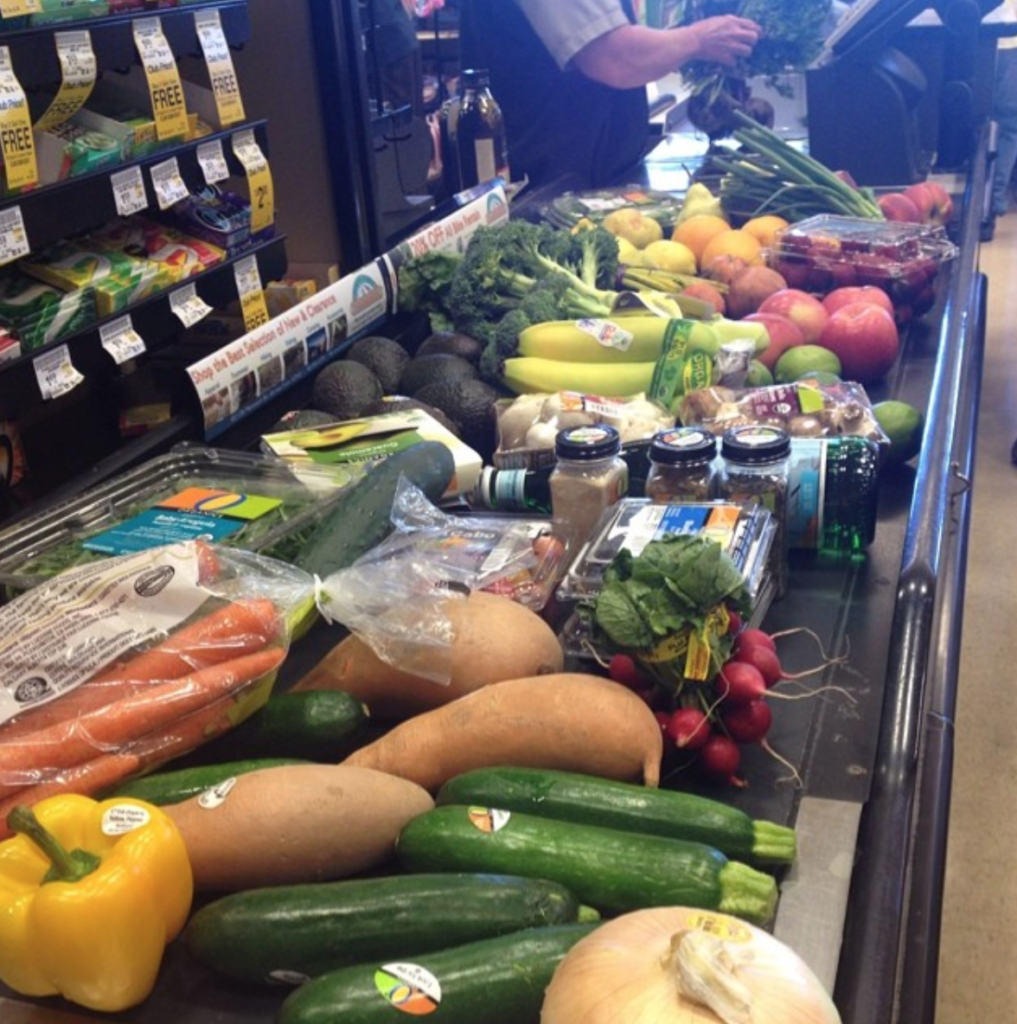 5. Improve your vitamin and mineral intake by only buying organic fruits and vegetables.
5. Improve your vitamin and mineral intake by only buying organic fruits and vegetables.
- Experiment with “new” vegetables, such as collard greens, kale, mustard greens, chard or bok choy.
- Always include a healthy fat with your vegetables. It assists in transporting the minerals to the cells of the body.
- Wash all produce with either:
- Apple cider vinegar – 1/4 cup to a basin of water
- Grapefruit seed extract – 5-6 drops to a basin of water
- Lemon Essential Oil – 5-6 drops to a basin of water
6. Buy raw, organic nuts and seeds to use as snacks, in salads or with veggies.
- Some good choices include: almonds, pecans, pine nuts, Brazilian nuts, macadamia nuts, walnuts, pumpkin seeds, sesame seeds and flax seeds.
- Be sure to properly prepare your nuts and seeds to help you properly digest them. You can find more information below, but these directions will help.
- For added flavor, toast them in a skillet with Celtic Sea Salt.
- To grind flax seeds, use a coffee grinder. Also, don’t heat ground flax seeds.
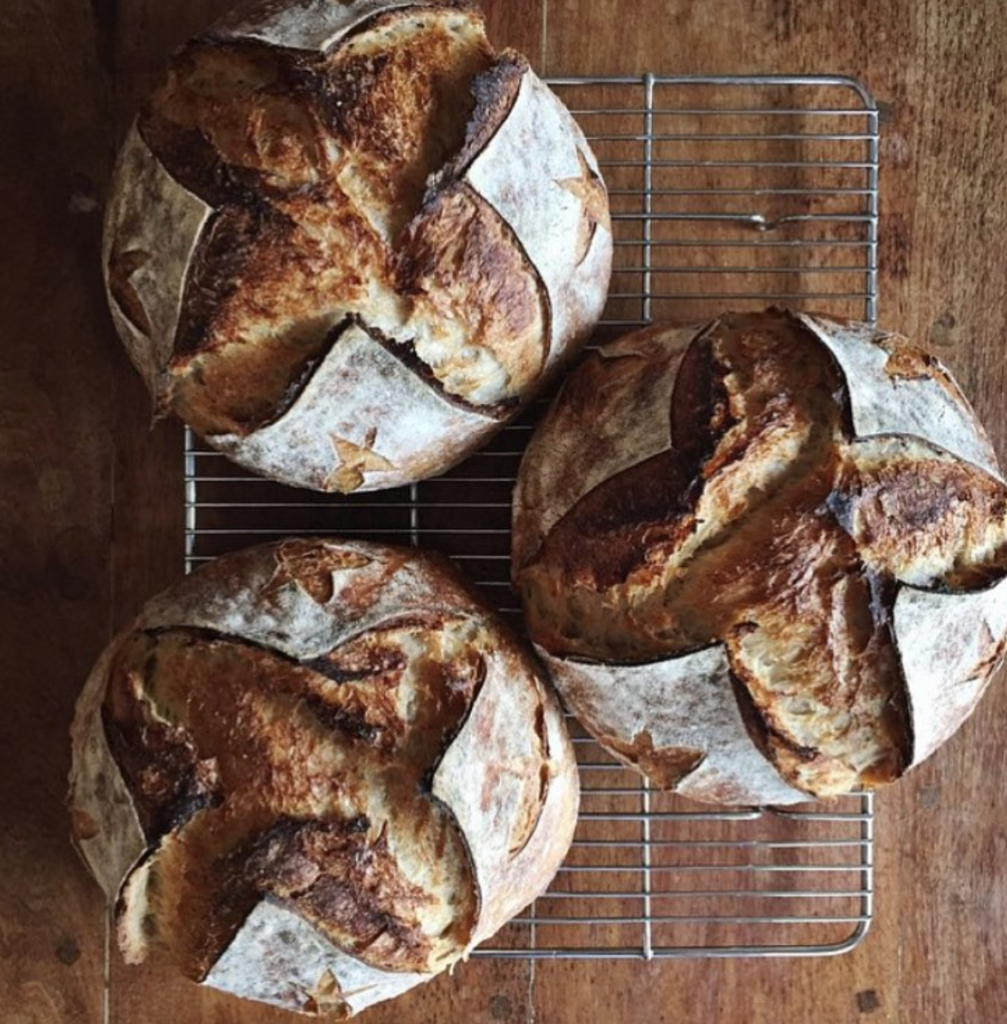 Week/Month 2: Grains
Week/Month 2: Grains
1. Eliminate refined flour and products made with refined flour.
- Avoid denatured foods that are labeled “enriched flour” or “wheat flour”. “Enriched” grain products have synthetic vitamins added to them, and these synthetic vitamins are toxic to the body.
- Instead, purchase breads that are labeled “freshly milled organic wheat, rye, rice, etc.”
2. Incorporate whole, organic, unrefined grains into your diet.
- Some good examples include brown rice, millet, kamut, spelt, rye, barley, quinoa and amaranth. Be adventurous and creative.
- To properly prepare your grains, see below and follow these directions.
3. Purchase a grain grinder to assure highly nutritious flour for baked goods.
4. Always store your whole grain flour in the refrigerator, not the freezer.
- Freezing destroys the vitamin E contained in the flour.
5. Replace boxed cereals with whole grain porridges made from whole or freshly cracked grains.
- This includes brown rice, millet, quinoa, amaranth, buckwheat, kamut, spelt, wheat and oats.
- It’s important to soak your grains.
- All grains contain phytic acid in the outer layer (or bran). And phytic acid protects grains during growth, but it binds with calcium, magnesium, copper, iron and zinc in the intestinal tract, which makes these minerals not absorbable. Therefore, long-term consumption of unsoaked grains can contribute to leaky gut syndrome, colitis, Crohn’s and Irritable Bowel Syndrome.
- By soaking your grains, it allows the enzymes, lactobacillus and other beneficial organisms to break down and neutralize phytic acid. The simple step of soaking cracked, rolled or whole grains or flour will greatly improve their nutritional benefits and digestibility.
- Brown rice and millet contain lower amounts of phytic acid, and so it’s not as necessary to soak them. Also, I recommend buying rolled or cracked grains (i.e. oat, barley, kamut flakes, etc.) in packages rather than from bins when possible because they tend to become rancid faster in bins.
- Here are some directions on how to soak your grains.
- Here’s my favorite granola recipe, which is a great cereal replacement.
Remember…
As I said earlier, this transition is not an event. It’s a lifestyle process! Therefore, take it one meal and one day at a time so you don’t become overwhelmed. I can also promise you that after you’ve made these first 2 steps, you’ll notice a remarkable difference in your health!
I’d also love to hear from you as you make this transition. So, please comment below with your progress and questions.
When you are ready, go to the next post about this to discuss the next 2 steps!
Please Note: This post contains affiliate links. If you make a purchase using these links, there’s no additional charge to you, and I will receive a small commission from the company. This helps to cover the basic costs of this website and allows me to continue providing you with free content. Thanks so much for your support!






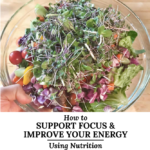



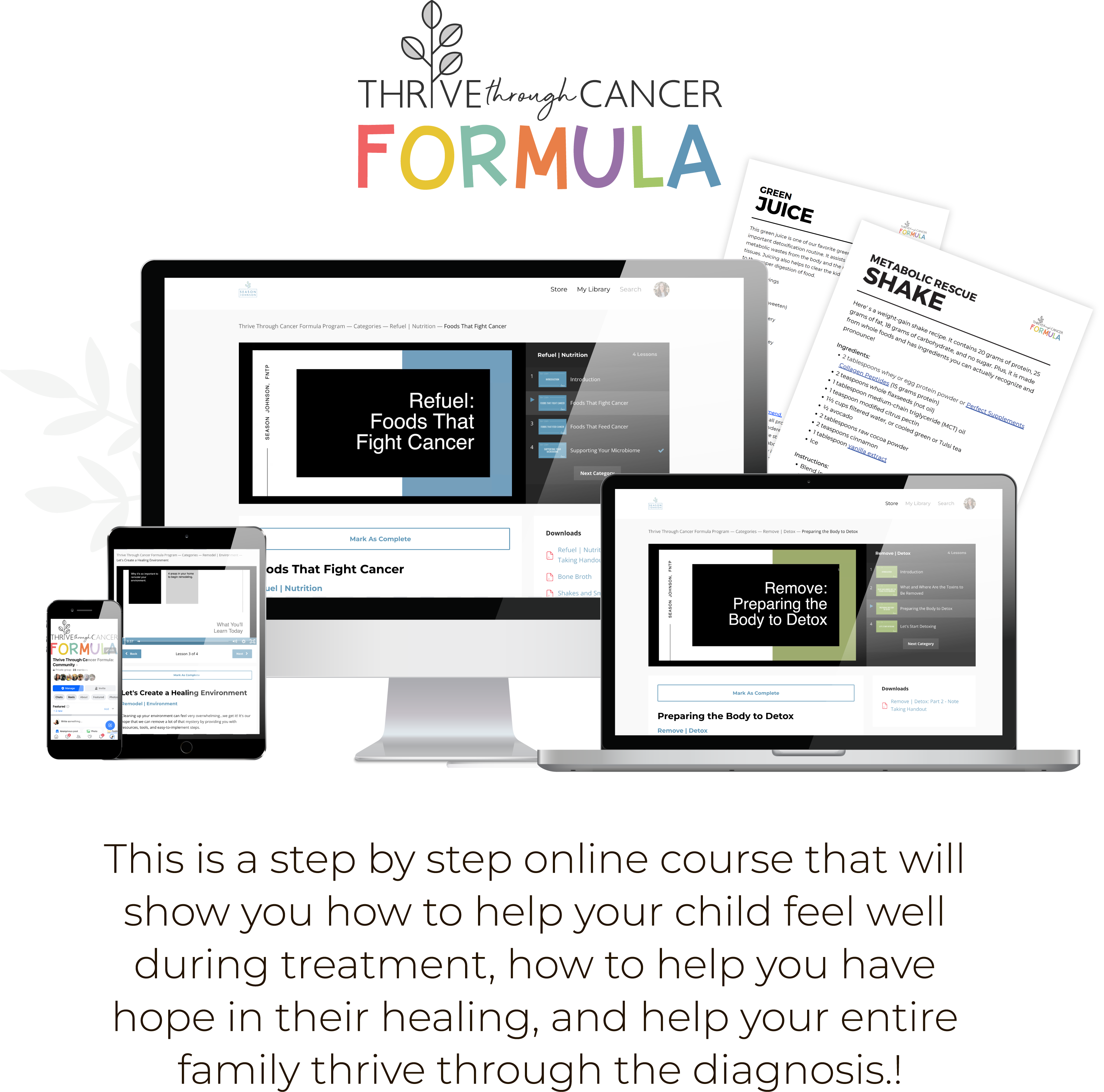


Thank you for doing this. Posting for all my pediatric cancer and non cancer families in my practice. Great to have it in a guide
You’re so welcome and am glad you find it helpful!
My kids love to grab a bowl of cereal in the mornings or snack time. Do you have any recommendations for kid-approved cereals?
Also, do you have an approved brownie recipe? The box brownies are not good and require vegetable oil.
Thanks!
Have you tried my granola recipe? My kids love that for cereal: https://www.seasonjohnson.com/grain-free-granola/ And for brownies, check out Deliciously Organic’s website…she had a couple that are delicious. I also love Simple Mills’s brownie mix, and you can use coconut oil or butter in it.